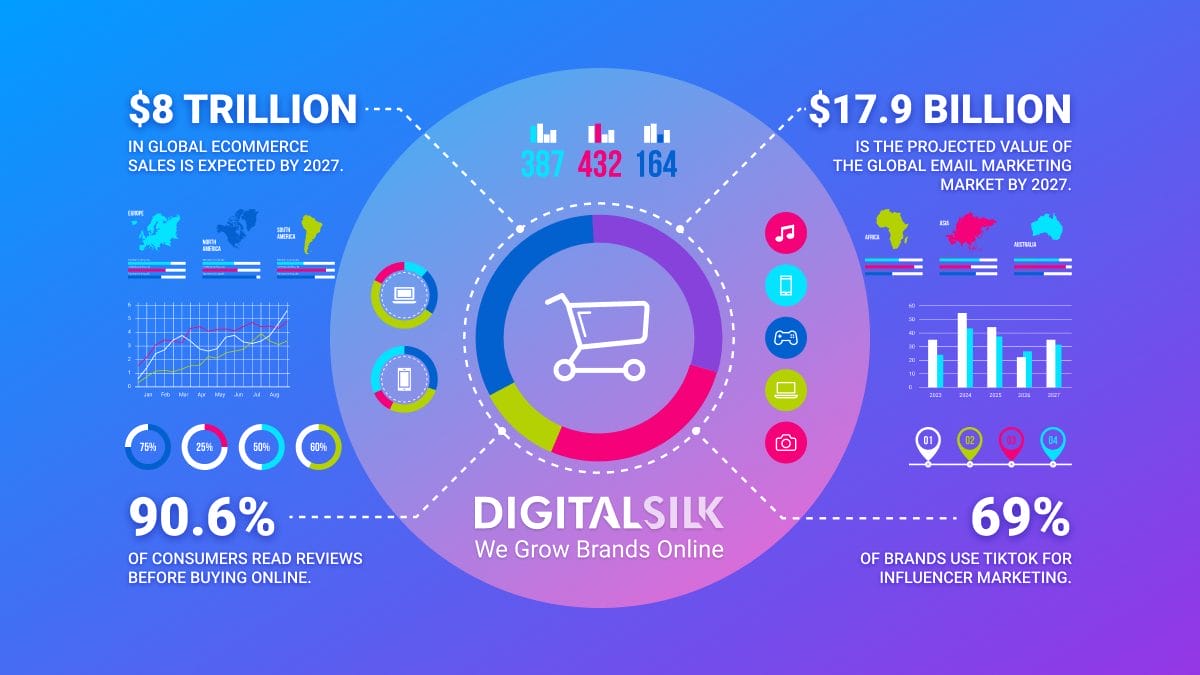According to multiple reports, advertising on the Las Vegas Sphere costs $450,000-$650,000 a day.
Luckily, placing a video on the Sphere is not the only way to get your business in front of potential clients.
There are many types of marketing collateral you can use to boost brand visibility and awareness, each requiring a unique investment (both financially and time-based) to match any budget.
Below, we explore 12 popular types of marketing collateral and examples of how they are used. Plus, we outline the best practices to follow when creating your own marketing collateral campaigns.
What Is Marketing Collateral?
Marketing collateral is the collection of digital or printed assets used by a company to communicate its message, products or services.
Using a range of different types of marketing collateral, such as websites, brochures and advertisements, businesses aim to inform and win over potential customers.
Although similar to the branding collateral, such as logos and mission statements, that define a company’s brand identity and personality, marketing collateral consists of the tools and materials used to execute marketing strategies and achieve short-term goals.
We’ve divided these types of marketing collateral into digital and physical assets, exploring 12 of the most important forms below.
Types Of Digital Marketing Collateral
Digital marketing collateral helps keep your target audience engaged and informed as they journey along your online sales funnel.
There are multiple types of marketing collateral that your business can use to capture, nurture and convert leads.
1. Blog Posts
Blog posts drive organic traffic to your priority landing pages and conversion points while increasing awareness about your brand, its values and services.
Whether developing a position as a thought leader or producing copy on external websites for inbound links, blog content is a fundamental aspect of attracting new prospects.
In fact, 55% of marketers have blog content as a top priority within their content marketing strategy.
Make the most of your blog posts by:
- Connecting with your target audience: Research the topics your potential clients are interested in, the problem they are trying to solve and the tone of voice that resonates with them and add visuals that attract attention and support your message.
- Being consistent: Write regularly and make sure the content matches your brand values and content published across all other channels—in terms of topics, language and visual identity.
- Staying relevant: Conduct market research to identify changing consumer preferences, behaviors and pain points to address in your content, as well as implementing wider industry trends and technologies for your processes.
Example:
Our content, marketing and SEO teams worked together to unearth relevant topics for New York law firm Spar & Bernstein’s prospective and existing clients.
By adding valuable content and clear calls-to-action on an engaging user interface (UI), our blogs resonate with S&B’s target audience and guide them along the sales funnel while providing them with useful information.
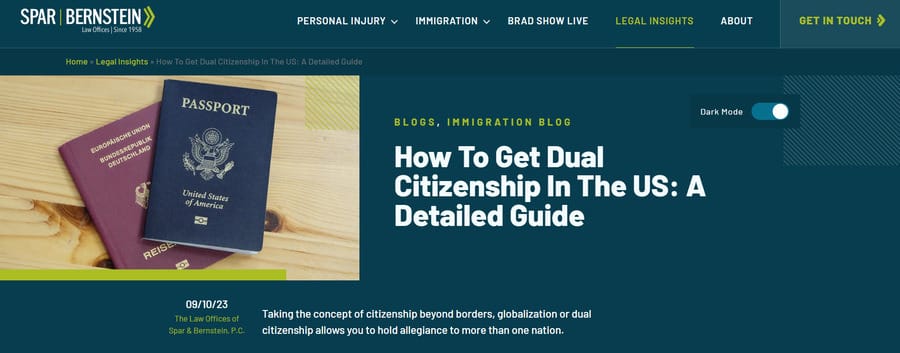
2. Web Pages
Whether a homepage, pillar landing pages or Contact Us page, your web pages are a core element in communicating with your target audience.
They drive conversions and extend brand awareness by telling the story of your brand and what it offers, all while providing a route for your visitors to act on their intentions,
Make the most of your web pages by:
- Researching your audience: Analyze the content that is ranking for your targeted keywords to understand what your audience is hoping to find.
- Focusing on user experience (UX): Design and develop an easy to use, streamlined UX to reduce frictions to conversion.
- Displaying your unique value proposition (UVP): Show your target audience what sets you apart from the competition through your messaging and visuals.
Example:
We created custom landing and Contact Us pages for S&B based on target audience and market research of their most important areas of practice to cover.
Then, by adding personalized messaging and team member headshots, to each unique page and conversion point, we helped S&B to connect with prospective clients and drive trust in their law services.
In turn, we boosted contact conversions by 59%.
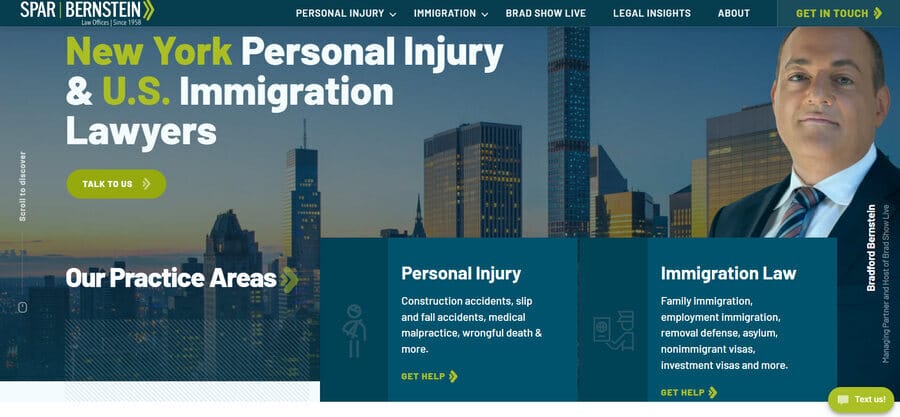
3. Videos
Video marketing is evolving, with 33% of marketers claiming they plan to invest more in short-form content for social media reels. What’s more, consumers consider short-form video to be 2.5 times more engaging than longer videos.
Whatever your video type, videos can help your business easily explain its solutions while boosting engagement with your target audience.
Once made, your videos can be shared, showcased and repurposed across multiple channels, combining your sales cycle and digital marketing strategy.
Make the most of your videos by:
- Focusing on storytelling: Connect with your audience by sharing your brand story and mission in a way they empathize with.
- Being accessible: Produce video content for all devices, especially mobile, and make sure it meets all accessibility standards.
- Prioritizing engagement: Captivate your audience immediately with enticing thumbnail images and compelling hooks in your titles and video openings to ensure they don’t skip or leave your video.
Example:
Our marketing team created a set of engaging short-form videos for Rollink, a premium luggage brand designed with convenient storage in mind.
The reels highlight the features of Rollink’s 360 Spinner and Mini Bag collections, recently launched in the U.S. market.
Using fast-paced videos with quick cuts, our team captured the ease of movement, practicality and chic designs of Rollink’s luggage solutions in an advert-friendly style. See for yourself below:
4. Emails
Email marketing can provide your business with returns on investment (ROI) of $40 for every $1 spent.
By sending personalized, conversational emails with consistent brand elements, such as logo and color palettes, and social proof, you can increase brand recognition and click-through-rates (CTRs) to your bottom-of-funnel sales elements.
Make the most of your emails by:
- Personalizing your content: Utilize newsletter tool features by coding the first names of your mailing list receivers into your email copy to attract initial attention within their inbox.
- Testing your results: A/B test your emails by sending separate campaigns to segments of your mailing list and tracking open rate and conversions to see which emails deliver the best results for your brand.
- Adding calls-to-action (CTAs): Give your audience an action to continue their journey into discovering your brand and its products or solutions through a blog post, landing page or contact link.
Example:
Our email marketing campaigns at Digital Silk showcase our latest website, branding or marketing project launches.
By including recent customer success stories and CTAs that describe exactly what lies behind the click, we highlight our expertise and results before giving potential clients the opportunity to discover more about how we can help their brand.
5. Case Studies & Testimonials
From in-depth case studies to client testimonials and social proof, highlighting customer success builds trust in your brand.
Whether it’s a logo of a brand you have worked with or a deep dive into a certain client, placing case studies on your website and other forms of marketing collateral helps position your brand as an industry leader.
Make the most of your case studies by:
- Using direct language: Clearly define the challenge, your solution and the results you achieved and how you did it to showcase your experience and capacity to solve your reader’s issue.
- Having varied examples: Choose case studies from a range of backgrounds to increase your prospects’ chances of relating to a specific project and identifying your brand as the right solution provider for them.
- Utilize data: Rather than telling your visitors about your solutions, show them using quantifiable results and concrete numbers.
Example:
For legal attorneys Watts Guerra, we included several important cases on their website homepage.
Each case study comes with video and written information, as well as wider data on Watts Guerra’s total cases and settlements to showcase their authority and reliability within the industry.
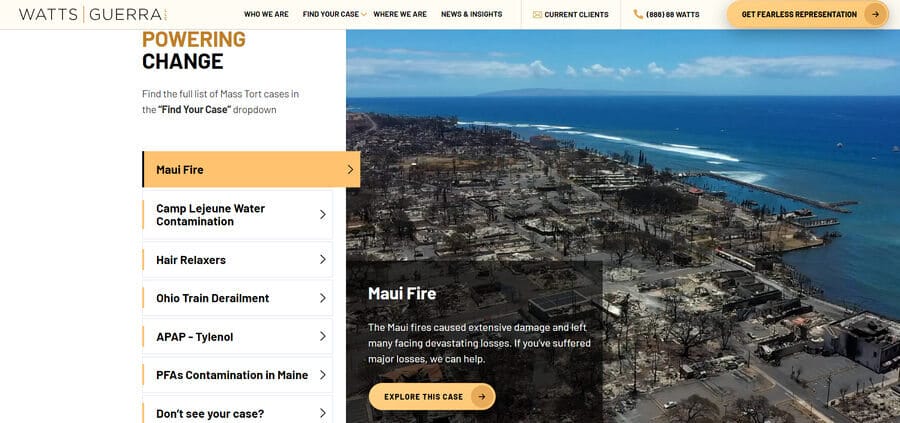
6. White Papers
A white paper is a long-form piece of informational content that boosts audience understanding of a certain topic or brand. Top companies may offer whitepapers as free downloads to generate leads and attract potential customers or clients.
By including your unique brand elements alongside valuable and informative copy or research, a white paper serves to solidify your position as a thought leader within your niche.
Make the most of your white papers by:
- Educating your readers: White papers are intended to educate and inform the reader. Include research findings, data analysis, case studies and technical details to provide a comprehensive understanding of the subject.
- Conducting independent research: Use your own stats, surveys and comments that can be shared across channels and types of marketing collateral.
- Adding expert comment: Work with specialists to give authority to your white paper’s content.
- Using visuals: Add infographics and visuals to break up your text and produce an engaging e-book or white paper.
Example:
Our 2023 Guide To Growing Brands Online includes expert insights across a range of branding, design and marketing topics.
Each page includes concise copy, useful data and our own research placed on a clean, captivating design.
2025 Digital Trends Guide To Growing Brands Online
transform your digital presence in 2025!
Email the download link to:
Types Of Physical Marketing Collateral
Physical or printed, marketing collateral helps your brand make a lasting impression on your target audience as they come int contact with your branding in real life.
From in-store experiences to direct sales promotions, physical marketing collateral can be utilized across mediums, creating multiple touchpoints for your brand.
1. Sales Presentations
A sales presentation, or pitch deck, is an opportunity to win business from the segment of your audience closest to converting — at the bottom of your sales funnel.
When talking to prospective customers who are already aware of your brand, use your sales presentation to drive the unique value your solutions provide.
Make the most of your sales presentations by:
- Highlighting your UVPs: Use data or direct messaging to showcase why your audience should choose you.
- Staying on brand: Make sure every sales presentation you create uses the same brand elements and information to drive consistency and credibility.
- Including testimonials: Add previous case studies to increase your audience’s perception of authority and expertise in your brand.
Example:
Katya Kovalenko’s sales presentation for data design company Accern utilizes bold text to draw attention and social proof of major brands to drive brand authority.
2. Brochures & Sell Sheets
Both brochures and sell sheets act as a physical version of an elevator pitch by condensing any relevant information about your products or services into a digestible pamphlet.
By adding eye-catching, scannable copy on attractive, branded designs, you can display your message while giving extra visibility to your key brand assets.
Make the most of your brochures and sell sheets by:
- Being concise: Secure your audience’s attention with simple and easy to read content.
- Staying on brand: Add your logo, typography, color palette and other elements from your style guide so your audience can connect the brochure to your brand.
- Including a CTA: Show your audience how they can contact you or continue their customer journey.
Example:
This concept brochure for fashion retailer Zara keeps copy at a minimum and focuses on Zara’s competitive edge — its clothing range.
3. Business Cards
Used mostly by professional individuals and independent businesses, business cards are important for collecting new leads.
Typically used in tandem with the word-of-mouth promotion of your brand and services, business cards give an opportunity for your target audience to remain in contact with your brand.
Make the most of your business cards by:
- Including important information: Ensure your company name and contact information are clearly highlighted.
- Adding branding elements: Include your logo and brand’s colors to make your business card instantly recognizable.
- Using reusable materials: Make your business card from durable materials so it can present your details professionally for years.
Example:
The business card template below is simple, straightforward and professional. With the company name and logo on the front, contact information on the back and a sleek design on both sides, the card portrays the brand’s services with just a few design features.
4. Direct Mail
In a world where 361.6 billion emails are sent and received every day, physical mail can stand out from the crowd and increase open rates.
In fact, 72% of consumers read direct mail immediately or the same day they receive it.
Direct mail can help your business distribute offers and coupons or provide information and updates about your brand, to an audience that’s most likely to find value in your communications.
Make the most of your direct mail by:
- Researching your audience: Carefully select your direct mail receivers based on insights such as mailing lists signups and customer activity or inactivity.
- Keeping your contacts up to date: Revise your mailing lists and contact details to ensure no direct mail is being wasted.
- Staying on brand: Include your core brand elements to align your direct mail with your wider marketing strategy.
Example:
One of the most inventive direct mail campaigns to take inspiration from was ran by renowned chocolate brand KitKat in 2012.
Featuring a personalized ‘missed package’ leaflet, the direct mail claimed that the customer’s KitKat Chunky was too big to fit through their letter box.
The award-winning campaign was successful as it spoke directly to their customers and used playful messaging to highlight the benefits of KitKat’s chunky chocolate bars.
5. Promotional Products
Promotional products spread awareness of your brand and keep it in the back of the mind of your audience long after your initial contact.
From equipment to clothing and beyond, promotional products are a long-lasting marketing collateral that spreads visibility through multiple uses.
Make the most of your promotional products by:
- Creating consistency: Use the same style or design across different forms of promotional products to foster recognition.
- Focusing on quality: Invest in high-quality materials to showcase your brand’s commitment to providing professional products or services.
- Staying trendy: Research consumer trends via social media to understand what promotional products would be most valuable to your target audience.
Example:
Our brand design team at Digital Silk crafted multiple types of marketing collateral, including a notebook mockup, for electric vehicle marketplace EV Universe.
We delivered a captivating, on-brand product by following modern design trends, such as gradient design, textural layering and a clean white logo design.
By placing gradients on top of geometric illustrations, we created a memorable design through depth and layering on an asset that would have previously looked dull and monotone.
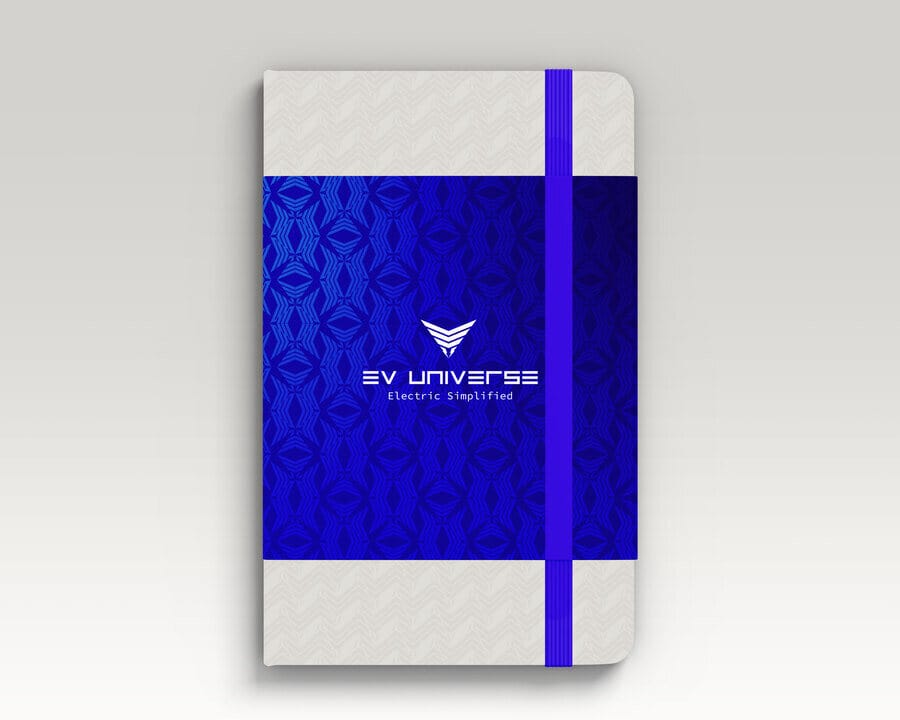
6. Displays
From point-of-sale to trade show exhibits, billboards and beyond, displays are a popular choice for businesses of all sizes and can be catered towards budgets and audiences.
By asking what you hope to gain from your display, you can create a marketing collateral that targets a specific goal.
For example, if you’re looking for wider brand visibility and engagement, craft a thought-provoking billboard display that sparks conversation. If you’re targeting a specific market segment, create a trade show display for a niche event.
Make the most of your displays by:
- Creating multiple formats: Adapt your display to fit many different formats, from shop windows to trade shows, to increase the places your audience will encounter your campaign and take in your message.
- Adding high-quality imagery: Use high-resolution, unique images and illustrations to capture attention.
- Including brand elements: Place your logo on your displays to connect your marketing collateral to your brand image.
Example:
We crafted a trade show exhibit display mockup for Hyundai AutoEver.
Complete with a core message of “engineers wanted” and a QR code for further information, our design speaks directly to prospective employees who would attend a trade show for engineers.
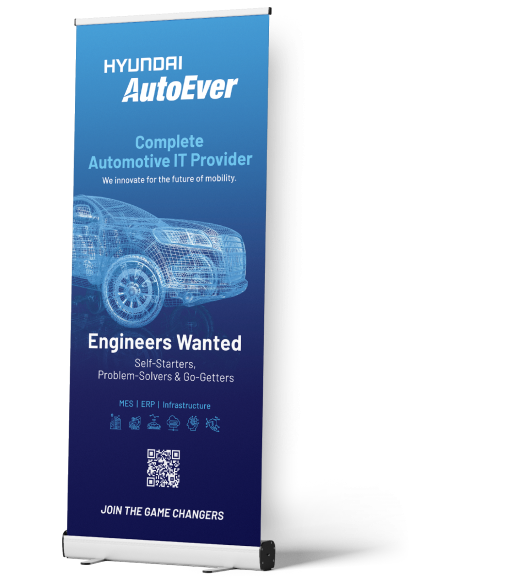
Marketing Collateral Best Practices
Well planned, designed and implemented marketing collateral can boost your brand’s revenue and elevate your position in your market.
Here are three tips to get it right.
1. Define & Track Your Goals
Setting specific goals before creating your marketing collateral will guide your project and help you choose the channels that provide the most value for your business.
22% of marketers claim that the most important goal of marketing is increasing revenue. However, you can also set various other targets for your business, such as fostering brand loyalty and improving customer understanding of your products and services.
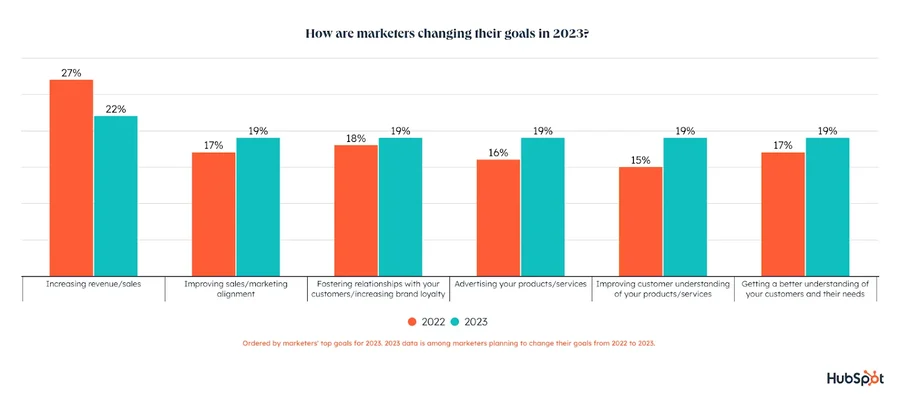
To define and track your goals, you can:
- Create actionable objectives: Break down your goals into actions that can be achieved by certain marketing collateral. For example, to extend knowledge of your products and services create explanatory videos for YouTube and social media.
- Outline your key performance indicators (KPIs): Understand which measurements you wish to improve and create campaigns that will support this. For example, to boost sales you can work on collateral at the bottom of your sales funnel, like your website landing pages, and track conversion rates as a KPI.
- Measure your progress: Follow analytics on platforms like Google Analytics to discover how your marketing campaigns are performing against previous results and use this to guide future campaigns. For example, track email click-through-rates (CTRs) before and after you introduced a new messaging strategy.
2. Research Your Target Audience
By researching your target audience, you can define the marketing channels, creative assets and tone of voice that will best connect with their values.
In fact, 36% of marketers say that data helps them reach their target audience more efficiently.
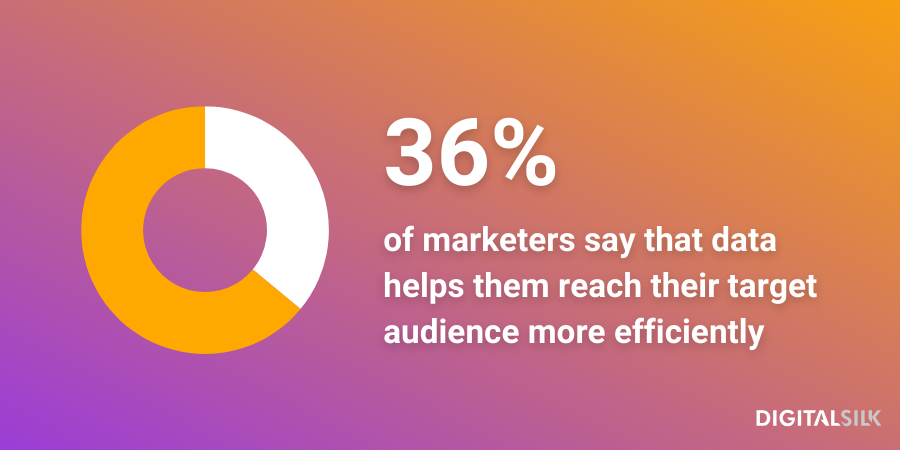
To research your target audience, you can:
- Analyze your insights: See what form of content, designs and messaging connects with your audience and which of your marketing channels they use most by analyzing key metrics like time on page and CTR.
- Create user personas: Build examples of your target audience with their backgrounds, goals and behaviors.
- Engage with social media: Discover what marketing collaterals and styles would resonate with your target demographic by following social media discourse and analytics.
3. Stay On Brand
Creating on-brand marketing collateral that represents your visual identity helps build your brand recognition and increase the touchpoints that lead prospects along your sales funnel.
Today, 68% of brands say that brand consistency has contributed to revenue growth of 10% or more.
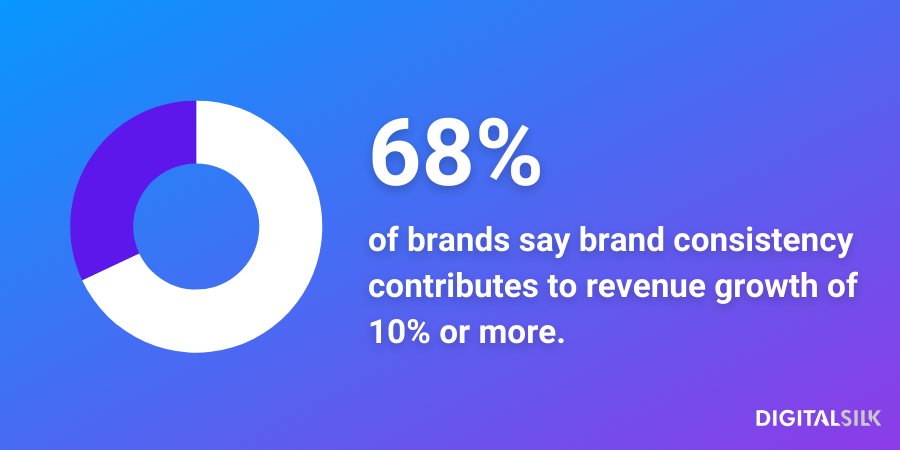
To stay on brand, you can:
- Design a brand book: Create and follow a style guide, or a brand book, to give you and your team members reference to all your important branding elements.
- Reuse your collateral: Discover which of your campaigns have been most successful and rework the content across other forms of marketing collateral.
- Invest in a marketing agency: Manage all your marketing collateral with the support of one agency to ensure your assets follow a similar style and represent your visual identity.
Develop Your Marketing Strategy With Digital Silk
At Digital Silk, we create custom marketing strategies that elevate your brand presence, connect with your audience and achieve your brand targets.
We research the most effective marketing collateral for your business before creating superior campaigns that exceed expectations.
As a full-service web design agency, we provide a range of solutions to grow your brand, from digital marketing to branding, web design to development.
Our top marketing solutions include:
- Digital marketing
- Social media marketing
- Search engine optimization (SEO)
- Lead generation
- Pay-per-click (PPC) marketing
Whether marketing or beyond, our experts deliver superior solutions by:
- Taking project ownership: We handle your project’s complexities with expertise and professionalism.
- Acting with total transparency: We make sure your project sees no hidden costs or delays, while providing consistent feedback.
- Delivering measurable results: We establish and track your KPIs (like impressions and conversions) to give you a tangible outcome.
Interested in our marketing solutions?
Contact our team or call us at (800) 206-9413 to book a consultation and learn how we can grow your brand with bespoke marketing collateral solutions. Or, simply fill out the Request a Quote form below!
"*" indicates required fields









